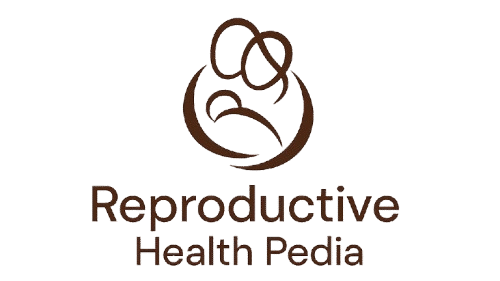
Intimacy is one of the most important aspects of a woman’s overall well-being. It is not only about physical closeness but a blend of emotional attachment, self-confidence, and mental health. Many women find it challenging to experience both arousal and pleasure during intimacy, and the reasons are often more complex than they may seem.
The good thing is that science, lifestyle changes, and emotional awareness can help women improve their arousal experiences in safe and natural ways.
What Is Sexual Arousal?
Sexual arousal is the body’s natural response to feelings of attraction, desire, or intimacy. It involves both physical changes in the body and emotional reactions in the mind.
When a person feels aroused, their body responds through changes in blood flow, hormone activity, and increased sensitivity in specific body areas. These responses help to prepare the body for sexual activity, but arousal can also be part of enjoying closeness and emotional connection.
The Stages of Female Sexual Response: A Medical Perspective
1. Excitement/Desire Stage
This is the beginning of arousal. Physical and emotional stimulation—such as attraction, touch, or mental imagery—triggers the body to prepare for intimacy.
What happens in this stage:
- Increased blood flow to sensitive areas
- Heightened muscle tension
- Faster heart rate and breathing
- Emotional anticipation and desire
2. Plateau Stage
During this stage, arousal intensifies and stabilizes. The body becomes more responsive, and sensitivity continues to increase.
Key changes in this stage:
- Stronger physical sensations
- Elevated heart rate and blood pressure
- More pronounced muscle contractions
- Steady levels of desire and readiness
3. Orgasmic/Climax Stage
This is the peak of the arousal cycle, often described as a sudden release of built-up tension. It creates an intense feeling of pleasure and muscle contractions.
Typical responses include:
- Rhythmic muscle contractions in the pelvic area
- A wave of physical and emotional release
- Peak satisfaction and relaxation
- Surge of oxytocin and endorphins creates feelings of closeness, relaxation, and euphoria.
Not everyone experiences orgasm in the same way, and some may not experience it at all. However, arousal and intimacy can still be deep.
What happens during resolution:
- Breathing and heart rate slow down
- Muscles relaxation
- A feeling of calmness or closeness
- Some people may experience a “refractory period,” where arousal is not immediately possible
Medical Insights into Female Arousal
A complex mix of physical and psychological factors influences female arousal:
- Hormonal Health: Balanced estrogen and testosterone levels support natural desire and lubrication.
- Mental Well-being: Anxiety, stress, or depression can reduce sexual responsiveness.
- Pelvic Floor Strength: Strong pelvic muscles improve sensations and satisfaction.
- Circulatory Health: Good blood flow is essential for arousal; conditions like diabetes or hypertension can impact intimacy.
- Age and Menopause: Hormonal shifts during midlife may reduce lubrication and desire, but supportive therapies (like local estrogen creams, lifestyle changes, or counseling) can help.
Psychological and Emotional Factors Influencing Intimacy
Arousal and satisfaction are not purely physical; emotional and mental health play equally important roles:
- Communication: Open discussions with a partner increase trust and intimacy.
- Body Image: Feeling confident in one’s body enhances sexual enjoyment.
- Stress Reduction: Stress management techniques (yoga, meditation, exercise) improve overall sexual health.
- Relationship Quality: Emotional closeness strengthens physical intimacy.
Common Myths About Female Arousal
Unfortunately, many misconceptions surround women’s sexual health, leading to confusion, guilt, or unrealistic expectations. Exposing these myths can help women and their partners better understand intimacy and build healthier relationships.
Arousal Is Instant for Women
Unlike men, most women need more time for arousal. Foreplay, emotional intimacy, and relaxation play a vital role. Expecting instant arousal can create unnecessary pressure and reduce satisfaction
Women Only Experience Arousal Through Penetration
Many women need clitoral stimulation or emotional connection in addition to penetration to feel fully aroused. Intimacy is not one-size-fits-all.
If a Woman Loves Her Partner, She Will Always Feel Aroused
Arousal is not always linked to love. Stress, fatigue, hormonal changes, or health conditions can affect desire even in loving relationships.
Arousal Only Happens in Youth
Women can enjoy healthy sexual arousal at any age. While menopause and aging may bring changes, intimacy and satisfaction can continue with communication, lifestyle adjustments, and sometimes medical guidance.
Lack of Arousal Means Something Is Wrong with the Relationship
Lack of arousal is often due to stress, medications, hormonal imbalance, or physical health conditions—not necessarily a problem with love or partnership.
Women Should Always Be in the Mood for Intimacy
Desire naturally fluctuates. Work, family responsibilities, and life stress can lower arousal temporarily. This is normal and doesn’t mean something is wrong.
Only Men Have Strong Sexual Desire
Women also experience a strong desire, but it may be expressed differently. Emotional connection, safety, and context often matter more for female arousal than simple physical stimulation.
Signs of Female Arousal in Intimacy
Female arousal is a natural response of the body and mind to intimacy. Unlike men, where physical signs are often obvious, women’s arousal can be more subtle and varies from person to person.
Increased Heart Rate and Breathing
As arousal builds, the body prepares for intimacy. A woman may notice her heartbeat becoming faster, along with quicker and deeper breathing.
Warmth and Flushing of the Skin
Arousal often causes more blood flow to the skin. Some women may feel a warm sensation or notice slight flushing on the chest, face, or neck.
Sensitivity in Erogenous Zones
Areas such as the breasts, nipples, and inner thighs may become more sensitive to touch. This sensitivity is a common early sign of arousal.
Vaginal Lubrication
One of the most apparent physical signs of female arousal is natural vaginal lubrication, which helps make intimacy more comfortable
Swelling of the Clitoris and Labia
Increased blood flow during arousal can cause the clitoris and labia to swell and become more sensitive, enhancing pleasure.
Heightened Muscle Tension
The body naturally responds to arousal by tightening specific muscles, especially in the pelvic area, thighs, and abdomen.
Diets That Can Improve Female Arousal
While intimacy is influenced by many factors—emotional connection, stress levels, and overall health—what you eat also impacts your body’s response. A balanced diet can support healthy blood flow, hormone production, and energy levels, all of which contribute to stronger arousal and satisfaction.
Foods Rich in Antioxidants
- Berries (strawberries, blueberries, raspberries)
- Dark chocolate (in moderation)
- Antioxidants improve blood circulation, which enhances sensitivity in intimate areas.
Omega-3 Fatty Acids
- Chia seeds, flaxseeds, walnuts
- These healthy fats reduce inflammation, support hormone balance, and boost brain health, which helps with desire and arousal.
Zinc-Rich Foods
- Pumpkin seeds, oysters, chickpeas, cashews
Zinc supports the production of sex hormones and may increase libido in women.
Magnesium-Packed Foods
- Spinach, kale, almonds, dark chocolate
- Magnesium improves muscle relaxation, reduces stress, and supports better blood circulation—helpful for sexual arousal.
Vitamin B Complex Foods
- Whole grains, eggs, bananas, avocados
- B vitamins help in energy metabolism and reduce fatigue, making intimacy more enjoyable.
Aphrodisiac-Friendly Foods
- Avocados (rich in vitamin E and healthy fats)
- Watermelon (contains citrulline, which boosts blood flow)
- Pomegranates (increase nitric oxide levels, improving circulation)
Hydrating Foods
- Cucumber, watermelon, coconut water
- Proper hydration prevents vaginal dryness and supports natural lubrication.
Conclusion
Female intimacy and pleasure are integral to overall well-being. By understanding the medical insights into arousal and satisfaction, women and their partners can embrace intimacy as a natural, healthy, and fulfilling aspect of life. Through a balanced lifestyle, emotional connection, and awareness of body changes, women can achieve a more confident and enjoyable intimate life — free from myths and misunderstandings.
References
- Shahhosseini Z, Hamzeh Gardeshi Z, Pourasghar M, Salehi F. A Review of Affecting Factors on Sexual Satisfaction in Women. PMC
- Woodard TL, Diamond MP. Physiologic Measures of Sexual Function in Women: A Review. PMC
- Kukkonen T. Devices and Methods to Measure Female Sexual Arousal. Wiley Online Library
- Basson R. A Model of Women’s Sexual Arousal. PubMed
- Polan ML, Desmond JE, Banner LL, et al. Female Sexual Arousal: A Behavioral Analysis. PubMed

